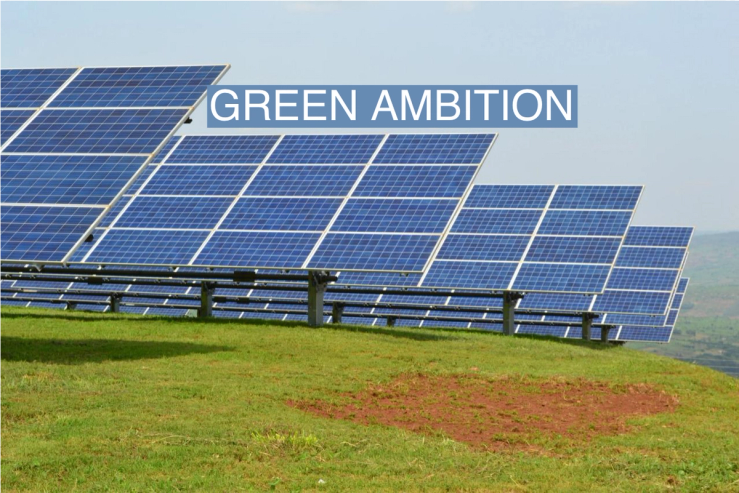The News
African investors are joining the race to raise funds needed to pay for climate adaptation projects. It comes amid a growing acceptance that the continent’s governments cannot fill a yawning funding gap while the world’s biggest lenders have largely turned their backs on the continent due to perceived risk.
African countries collectively need to raise around $2.8 trillion by 2030 to meet climate action goals, according to the Climate Policy Initiative research body. Many African governments cannot afford to pay for green initiatives and the ability of private investors to secure funding has been restricted by perceived risks associated with the continent and green projects more generally.
Some see a solution in blended finance, an approach through which public sources of money such as grants from development finance institutions or philanthropic organizations, are used to reduce the risk for private investors. The African Development Bank is partnering with African banks to fund projects aimed at addressing the impact of climate change through its African Green Bank Initiative. The scheme, which has access to a $1.5 billion fund and technical support from European asset management firm Amundi, was launched in May.
Audrey-Cynthia Yamadjako, who heads the AfDB program, told Semafor Africa that the scheme was expanding. It was launched in West Africa with lenders in Côte d’Ivoire and Benin and would be expanded to banks in North Africa next year, followed by others in East Africa.
“About 87% of climate finance on the continent comes from the public sector, when we know that it should be the reverse.” said Yamadjako, speaking last week on the sidelines of the AFSIC conference on investment in Africa. She said there is a need to “use blending more” to meet a “huge need” on the continent.
Know More
One recent example of a local investor backed blended finance initiative was by Nigerian credit guarantor InfraCredit, which was set up by the country’s sovereign wealth fund in 2017. Recent projects by InfraCredit, which is among a new breed of African institutions that taps local capital markets, include the installation of solar-powered telecoms base stations in 22 Nigerian states under a co-financing deal with the UK’s government’s £10 million Climate Finance Blending Facility.
Other organizations, including U.K. development finance institution British International Investment (BII), have used blended finance in recent years to attract private investment. And some are targeting local capital held in African markets, in the form of local pension funds and insurance companies, to fund sustainable development. The approach seeks to reduce risks through the use of local currencies.
Alexis’s view
Africa only attracts around 3% of global climate finance, despite being the continent hardest hit by the extreme weather patterns. So African countries clearly need to find a way to fund projects that address the impact of climate change — from renewable energy initiatives to those which prepare countries for increasingly extreme weather conditions. It’s also abundantly clear that the continent’s nations can’t afford to foot the bill while hobbled by their existing sovereign debts which, due to weakening currencies, are in many cases becoming increasingly difficult to service.
Wealthy countries have failed to honor an agreement to provide $100 billion a year to developing countries by 2020 to meet climate financing costs, so there is a need to find other ways to plug the funding gap. Ramping up private investment makes sense, even though it would be unrealistic to believe that this alone could plug the gap needed.
The use of local capital, in particular, seems sensible. Rather than focusing on dollar-denominated debt, where local currency fluctuations increase the risk of defaults, it makes sense to look closer to home. But, as Amal-Lee Amin, managing director and head of climate at BII told me, blended finance is “not a panacea.” It is a valuable part of a “toolkit” to increase climate finance shortfalls but there is dire need for an array of innovative solutions. More needs to change, including the approach taken by ratings agencies who view much of the continent as a risky bet. The hope is that the U.S.-led push to boost the lending firepower of the IMF and World Bank also bears fruit.
Room for Disagreement
A lack of data around the use of blended finance and its impact is often cited as a problem. The Organization for Economic Cooperation and Development (OECD), in a report published last year, cited a lack of data as a shortcoming. The OECD said it has proved hard to scale up blended finance because finance deals that adopt this approach rely heavily on context, making them hard to replicate. “While bespoke transactions are important to showcase and innovate, scale can only be reached in repeat transactions,” it said in the report.
The View From Nairobi
Wairimu Karanja, a partner at Kenyan venture builder Persistent which invests in early stage climate-focused companies, said the research and development needed to innovate in green energy and climate adaptation was supported by government subsidies, grants and accelerator programs in advanced economies, unlike in African countries.
“Governments cannot provide that capital in sub-Saharan Africa as compared to the U.S. and Europe,” Karanja told Semafor Africa, adding that it often therefore fell to development finance institutions to find ways to work with private sources of finance. “That is really the greatest value of blended finance — it’s not just in de-risking private capital, but in fostering innovation,” she said.


